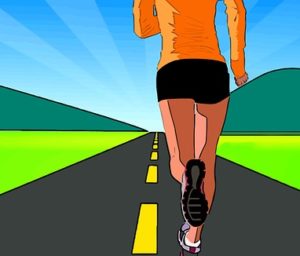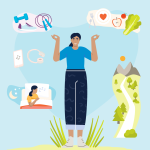Depression and Anxiety: Exercise Eases Symptoms
 When you have depression or anxiety, exercise often seems like the last thing you want to do. But once you get motivated, exercise can make a big difference.
When you have depression or anxiety, exercise often seems like the last thing you want to do. But once you get motivated, exercise can make a big difference.
Exercise helps prevent and improve a number of health problems, including high blood pressure, diabetes and arthritis. Research on depression, anxiety and exercise shows that the psychological and physical benefits of exercise can also help improve mood and reduce anxiety.
The links between depression, anxiety and exercise aren’t entirely clear — but working out and other forms of physical activity can definitely ease symptoms of depression or anxiety and make you feel better. Exercise may also help keep depression and anxiety from coming back once you’re feeling better.
How does exercise help depression and anxiety?
Regular exercise may help ease depression and anxiety by:
- Releasing feel-good endorphins, natural cannabis-like brain chemicals (endogenous cannabinoids) and other natural brain chemicals that can enhance your sense of well-being
- Taking your mind off worries so you can get away from the cycle of negative thoughts that feed depression and anxiety
Regular exercise has many psychological and emotional benefits, too. It can help you:
- Gain confidence. Meeting exercise goals or challenges, even small ones, can boost your self-confidence. Getting in shape can also make you feel better about your appearance.
- Get more social interaction. Exercise and physical activity may give you the chance to meet or socialize with others. Just exchanging a friendly smile or greeting as you walk around your neighborhood can help your mood.
- Cope in a healthy way. Doing something positive to manage depression or anxiety is a healthy coping strategy. Trying to feel better by drinking alcohol, dwelling on how you feel, or hoping depression or anxiety will go away on its own can lead to worsening symptoms.
You don’t have to do all your exercise or other physical activity at once. Broaden how you think of exercise and find ways to add small amounts of physical activity throughout your day. For example, take the stairs instead of the elevator. Park a little farther away from work to fit in a short walk. Or, if you live close to your job, consider biking to work.
How much is enough?
Doing 30 minutes or more of exercise a day for three to five days a week may significantly improve depression or anxiety symptoms. But smaller amounts of physical activity — as little as 10 to 15 minutes at a time — may make a difference. It may take less time exercising to improve your mood when you do more-vigorous activities, such as running or bicycling.
The mental health benefits of exercise and physical activity may last only if you stick with it over the long term — another good reason to focus on finding activities that you enjoy.
Read the full article online at MayoClinic.org to learn more about choosing an exercise program, getting started, and staying motivated.







